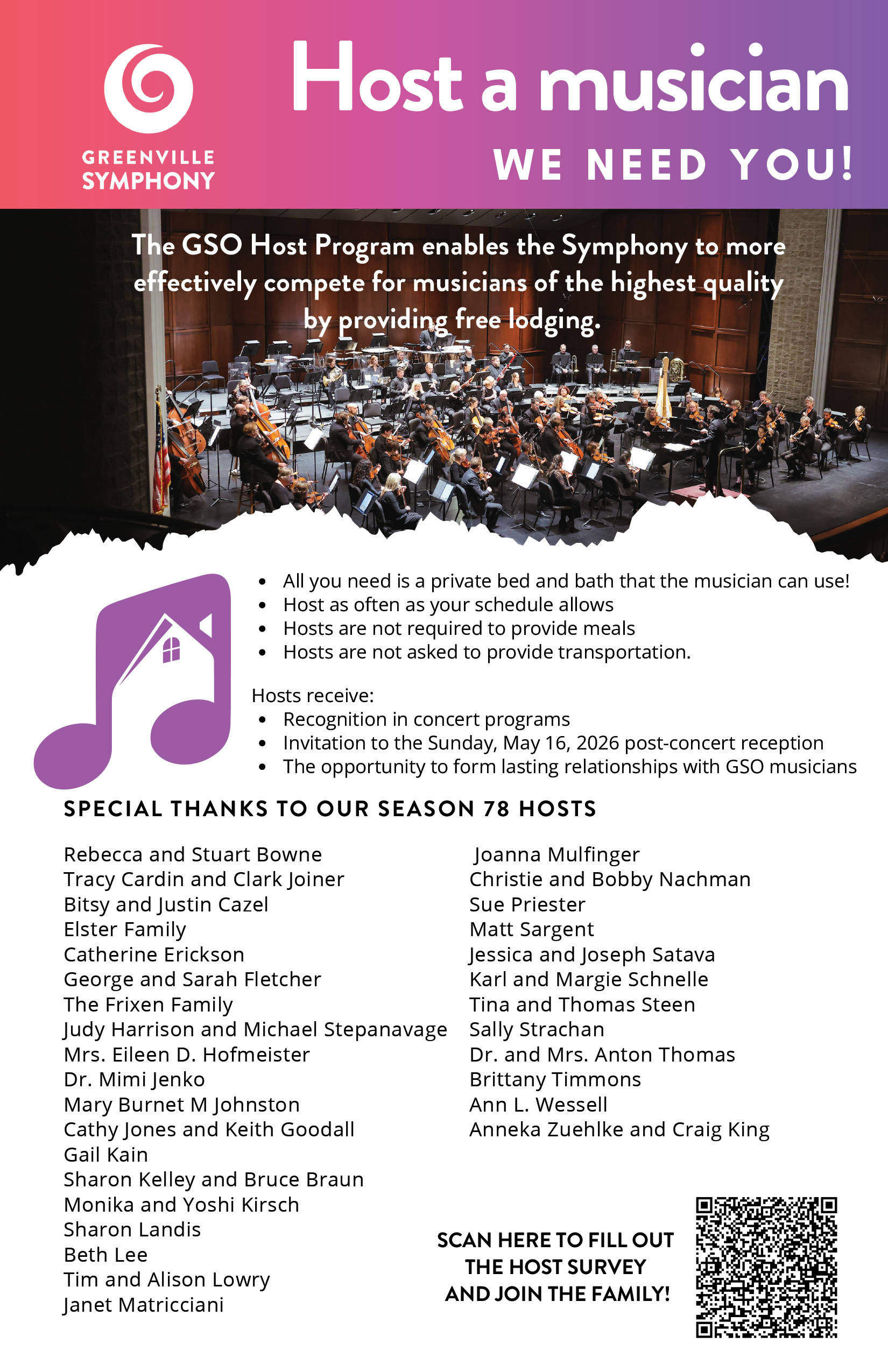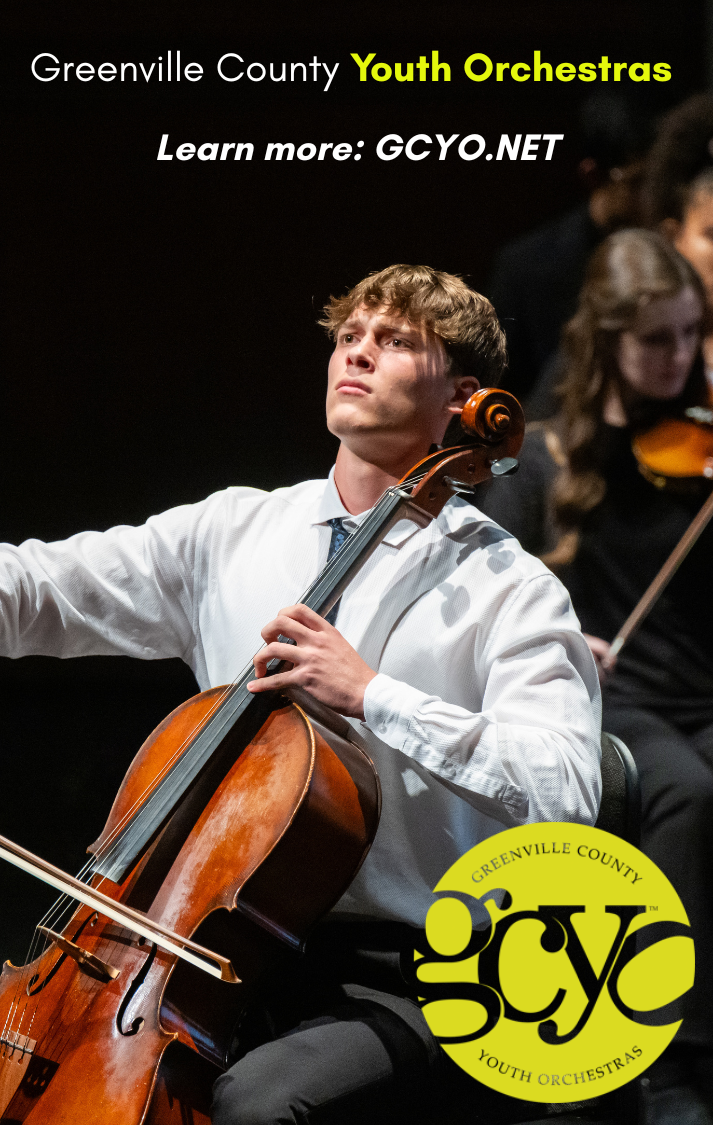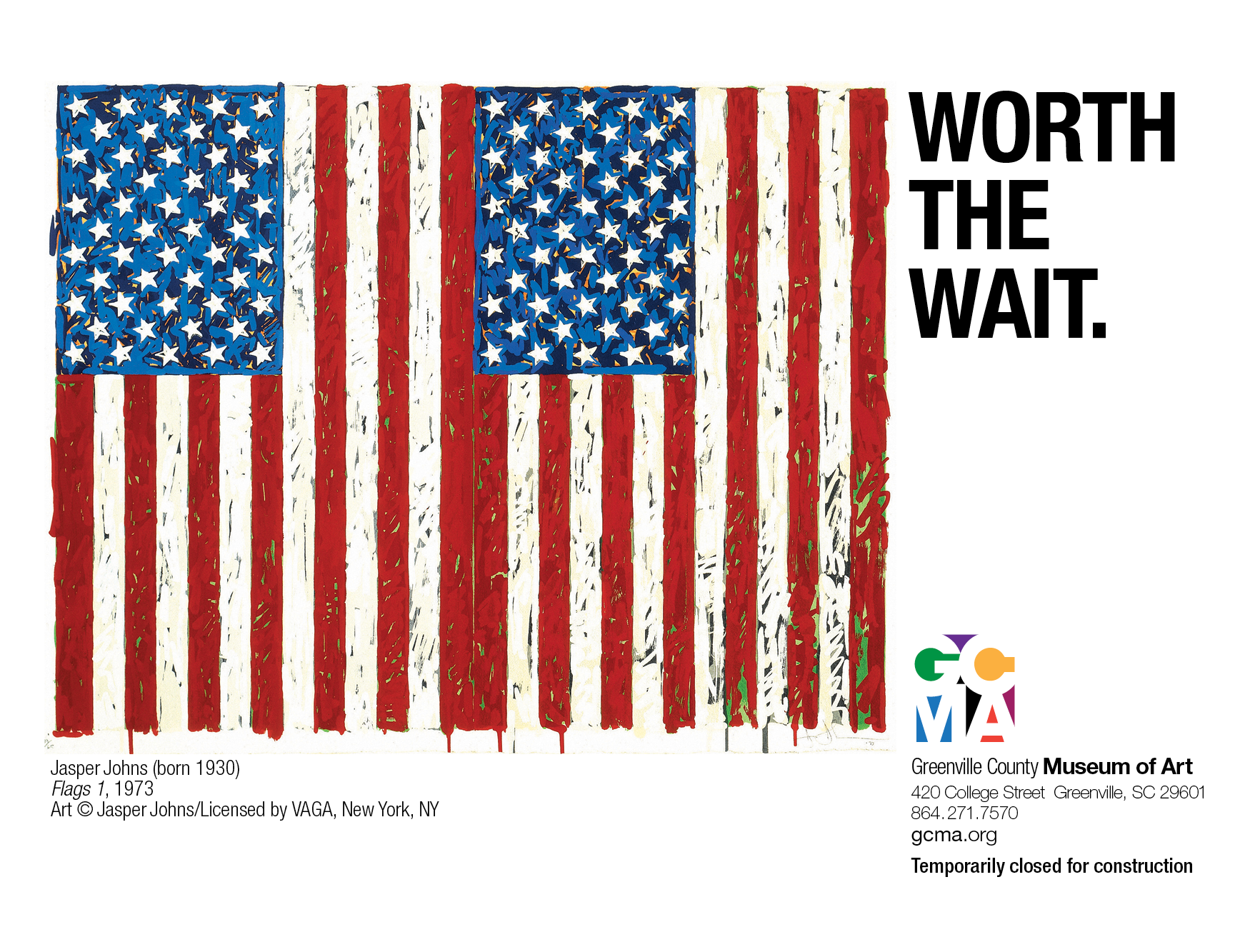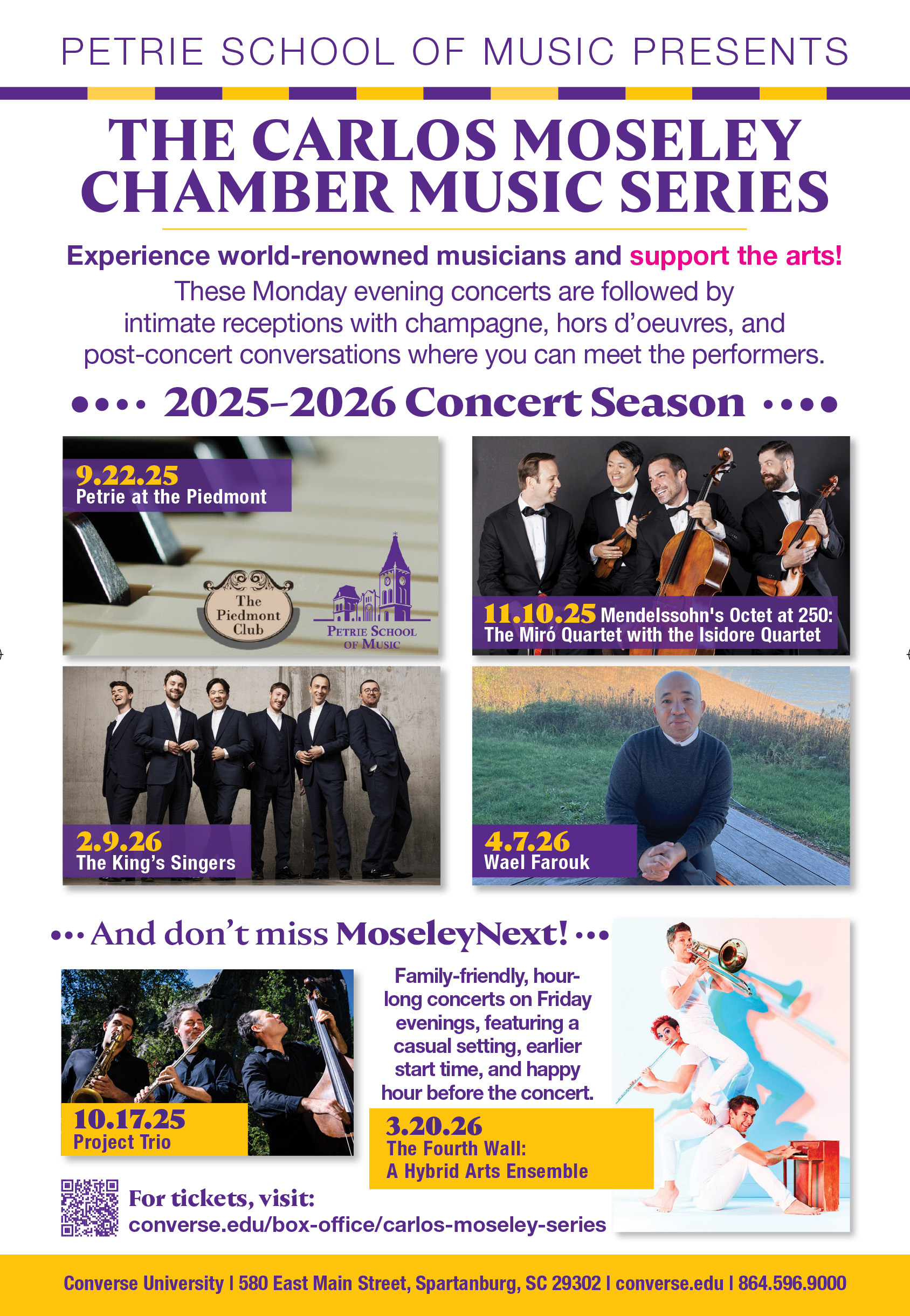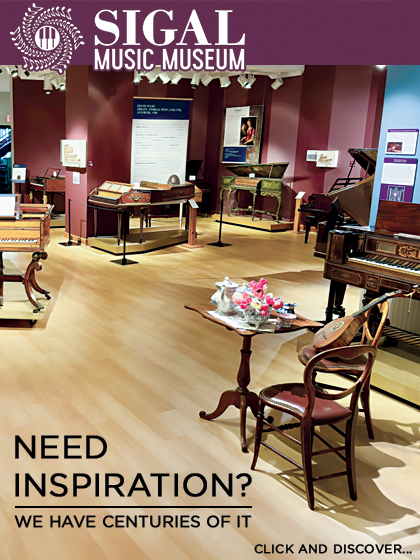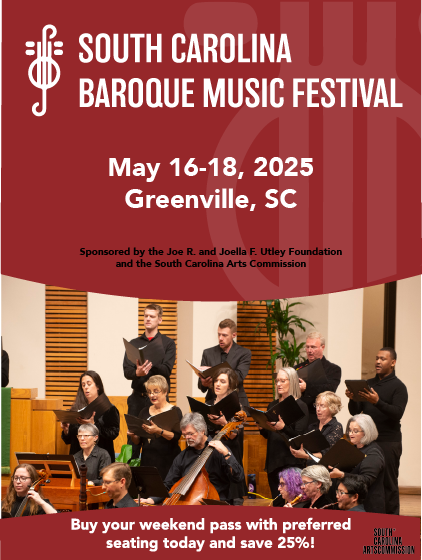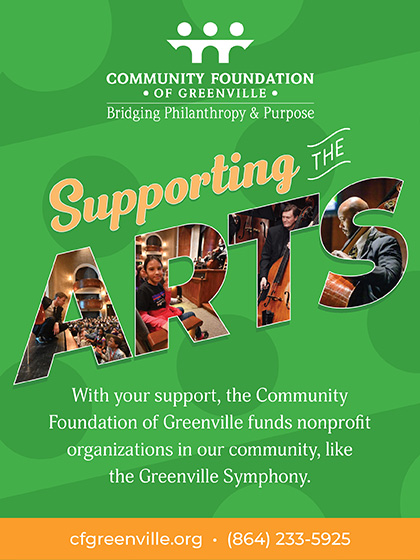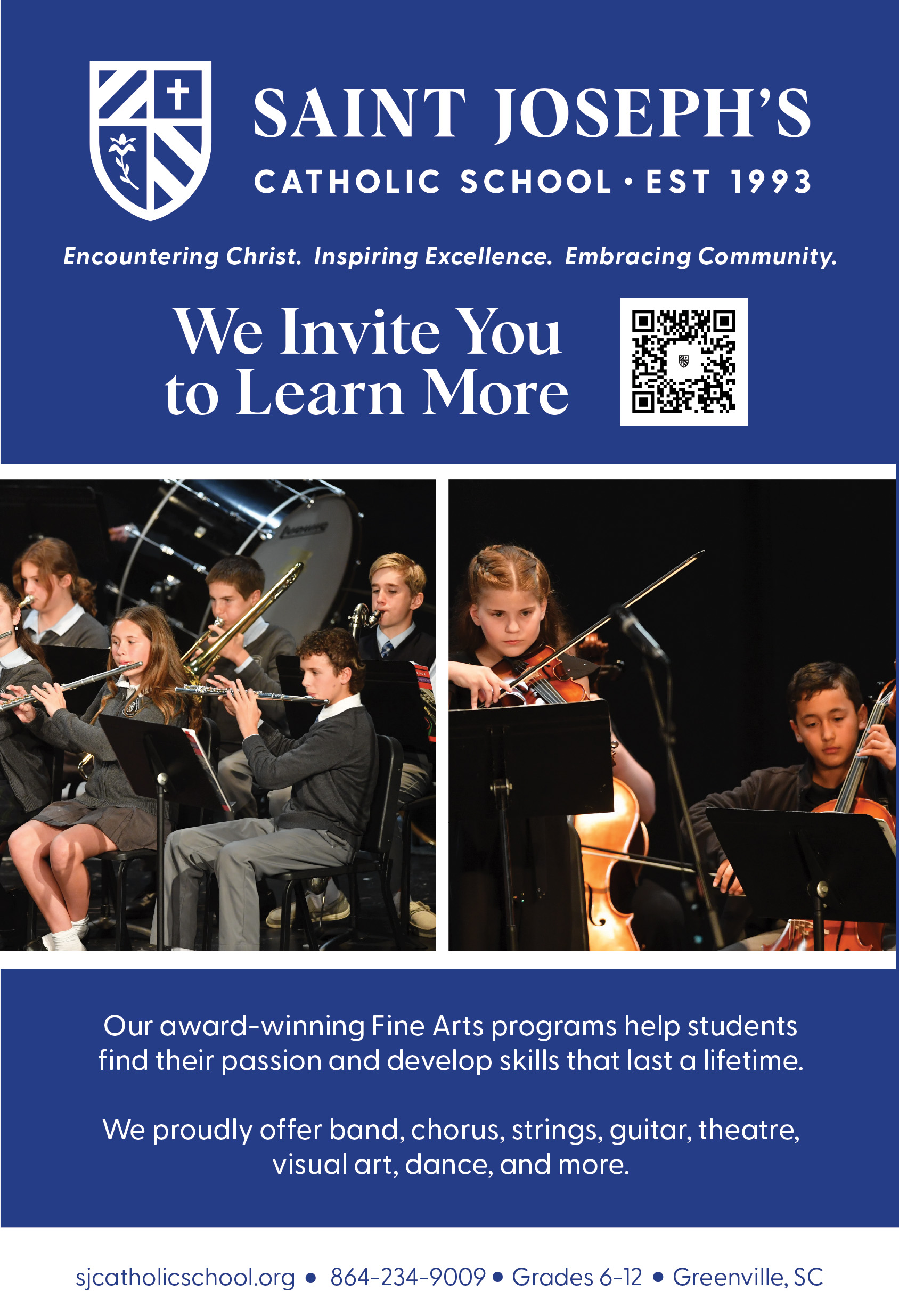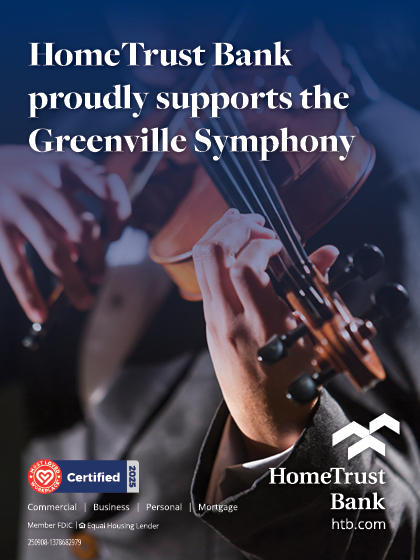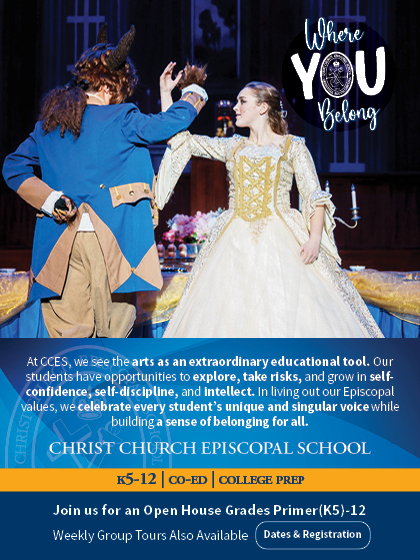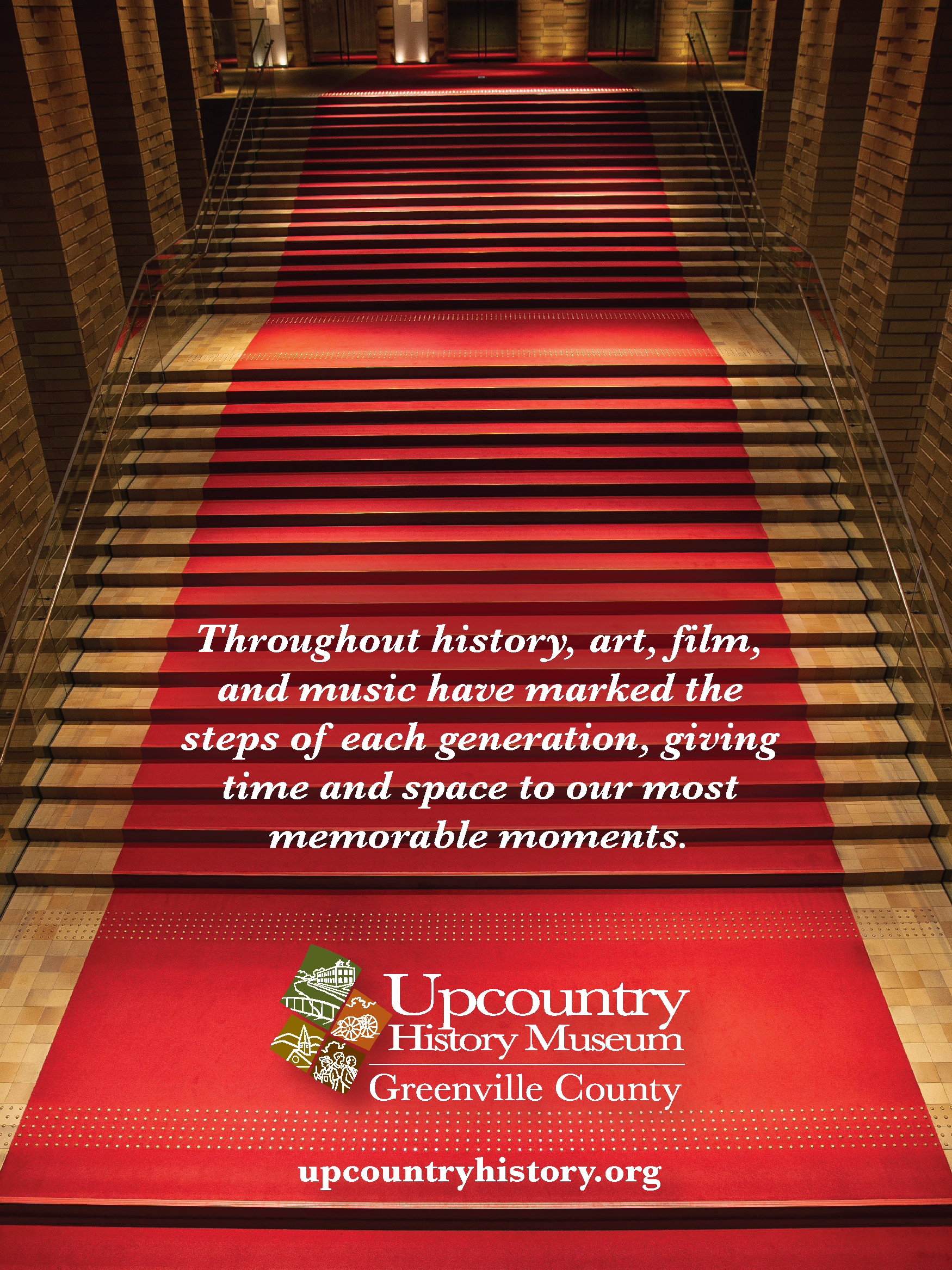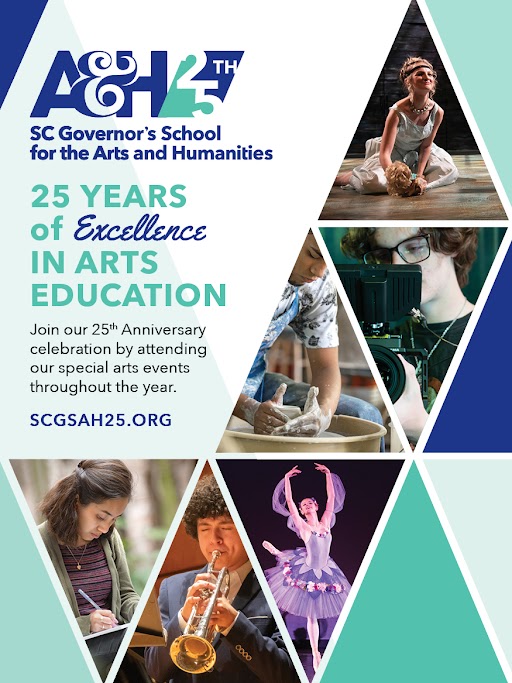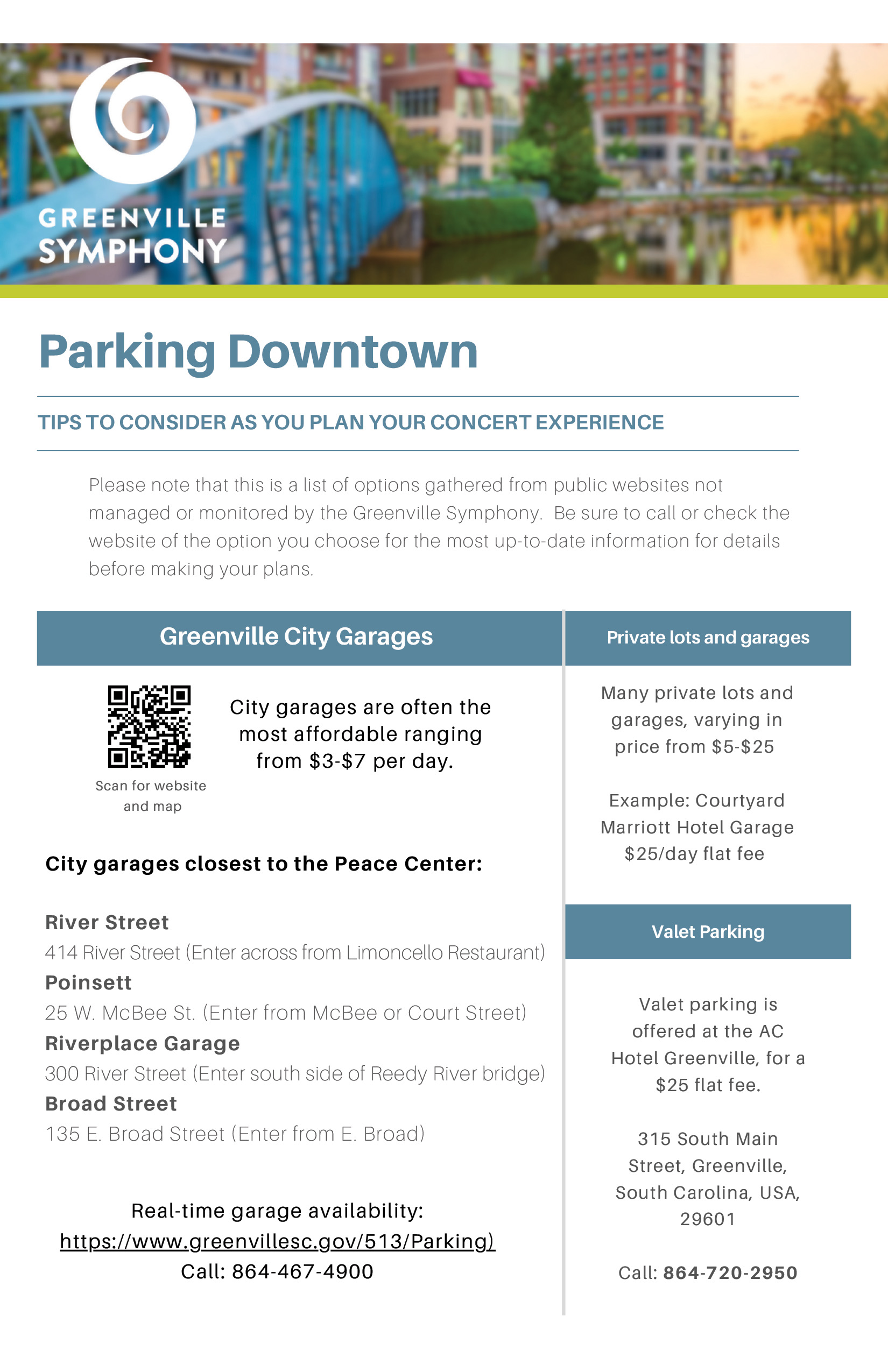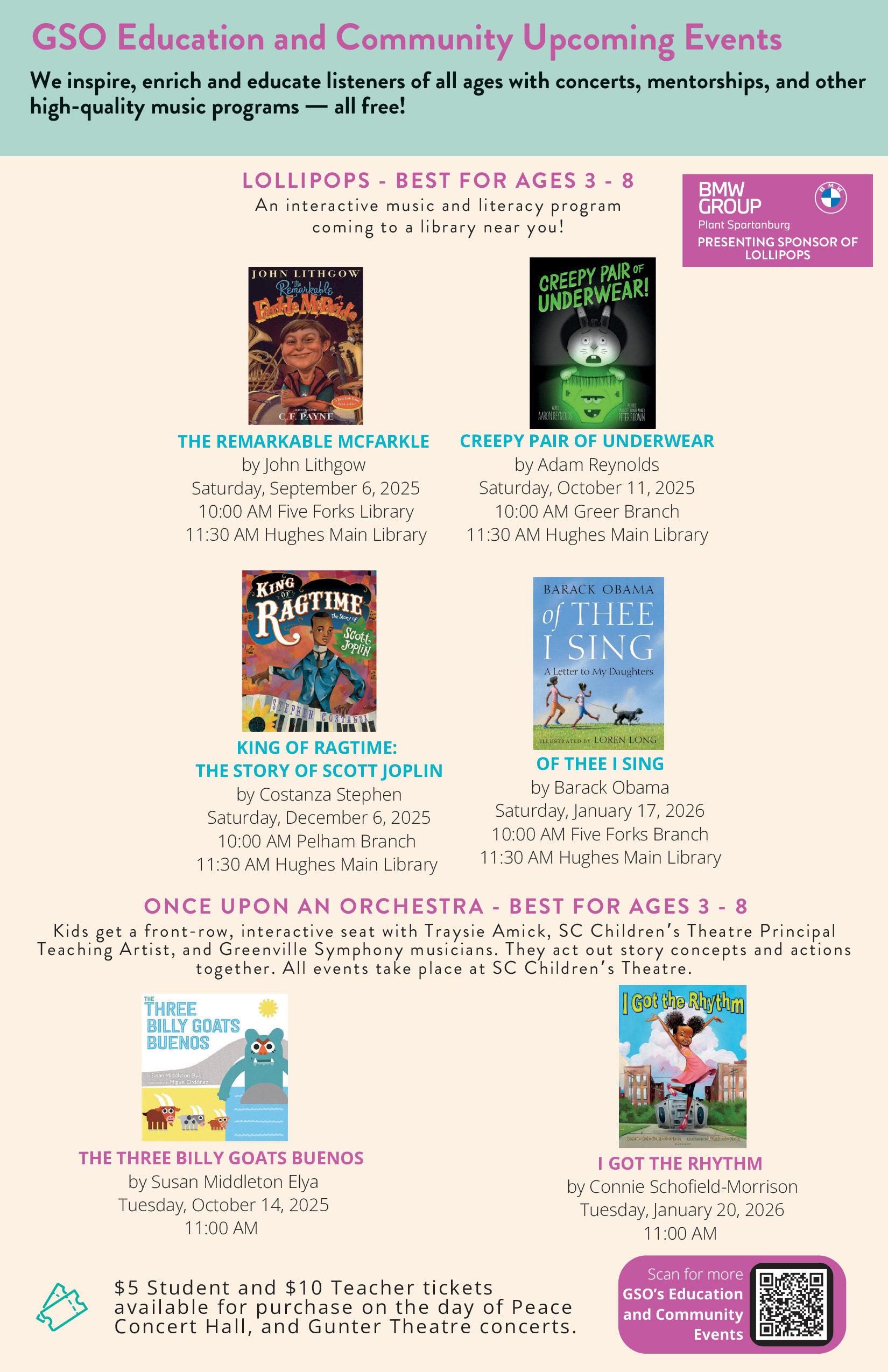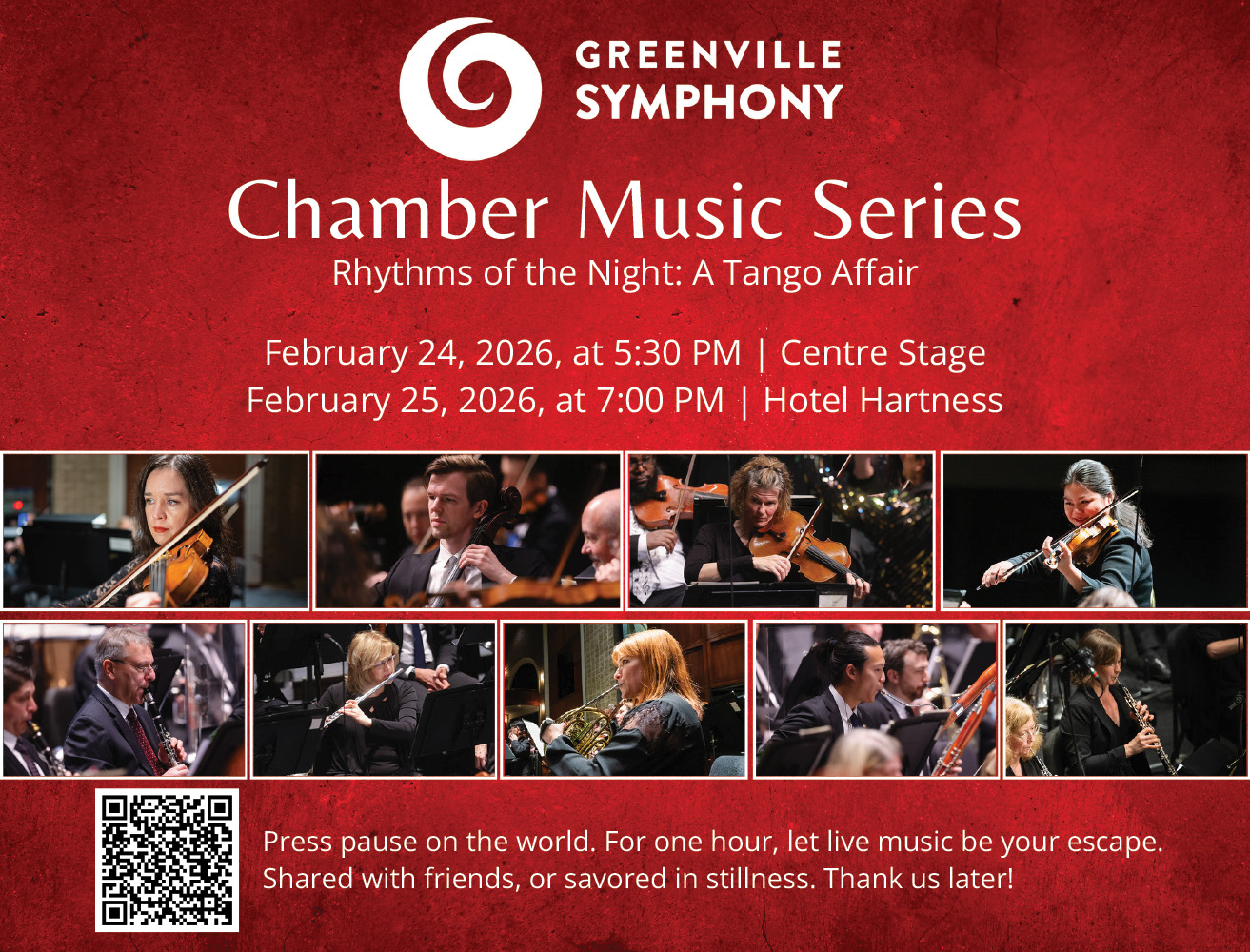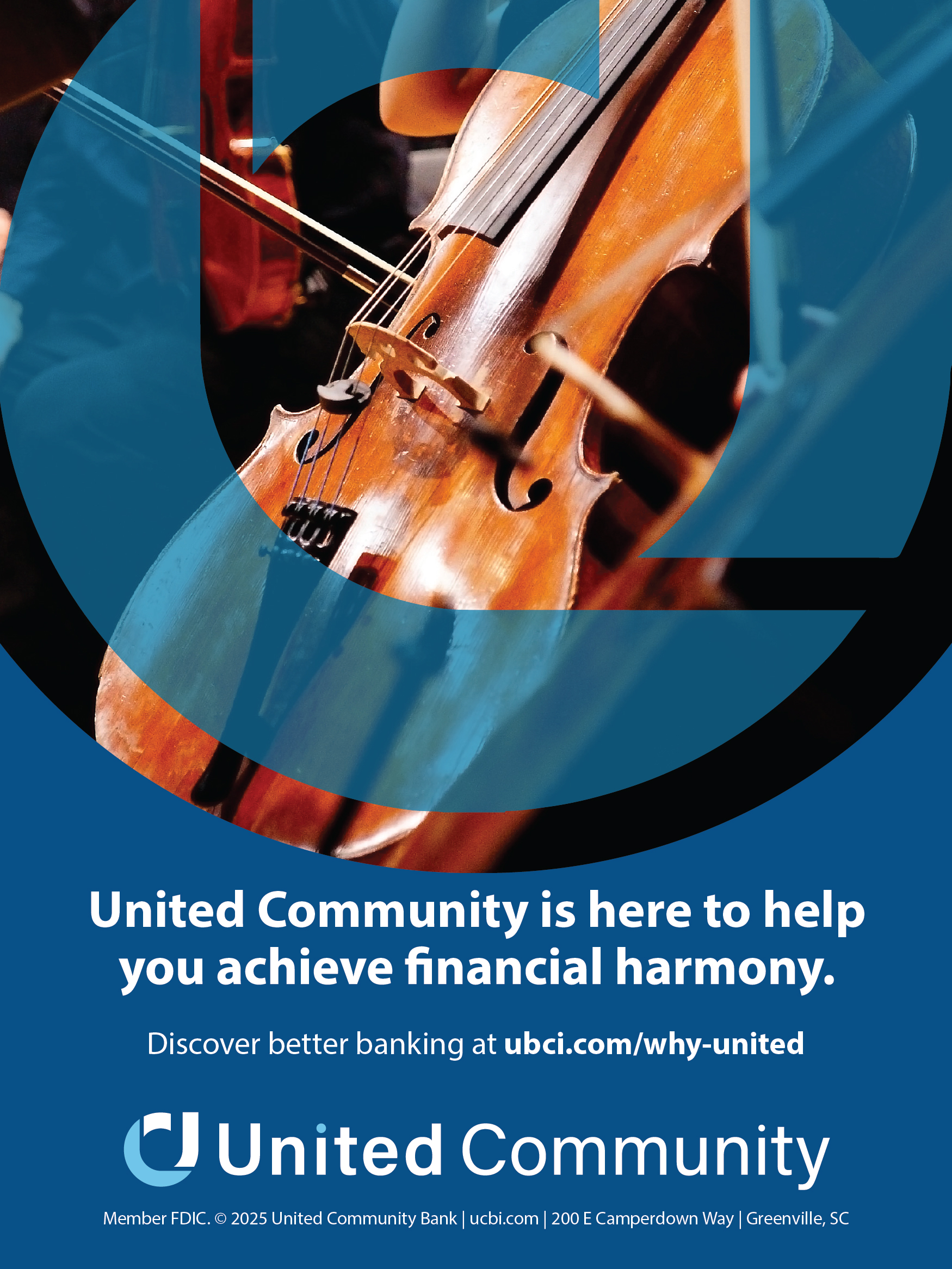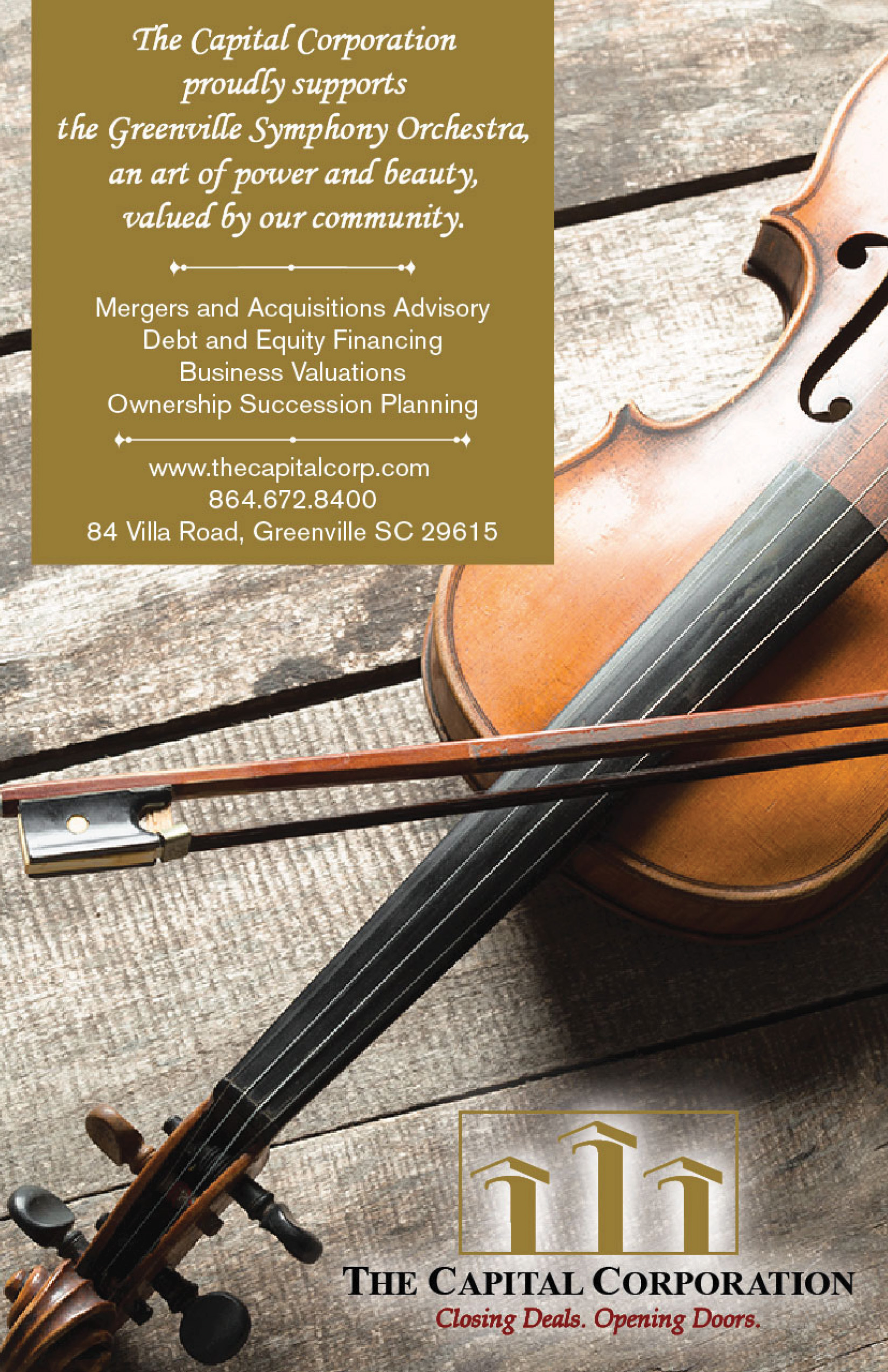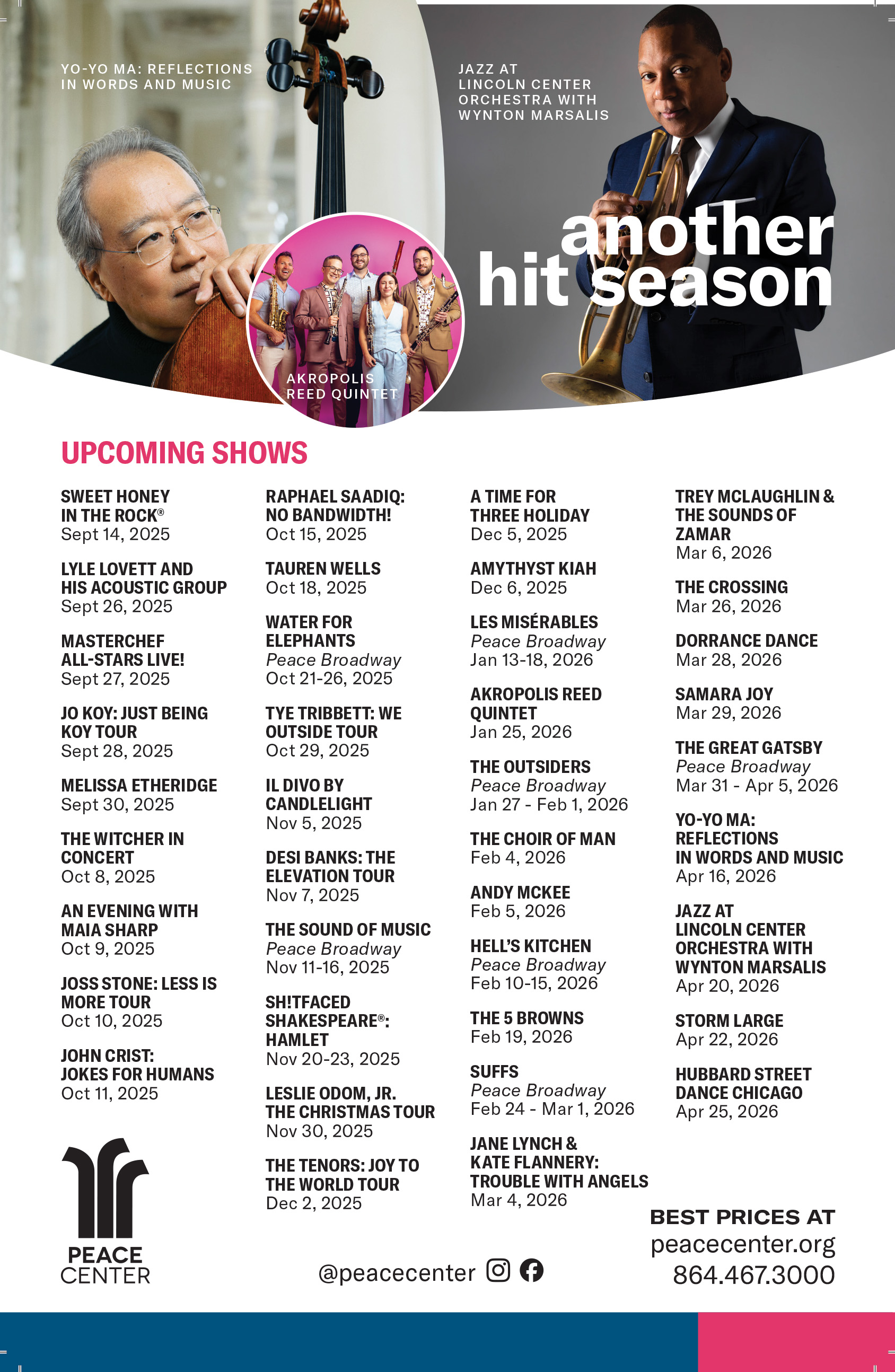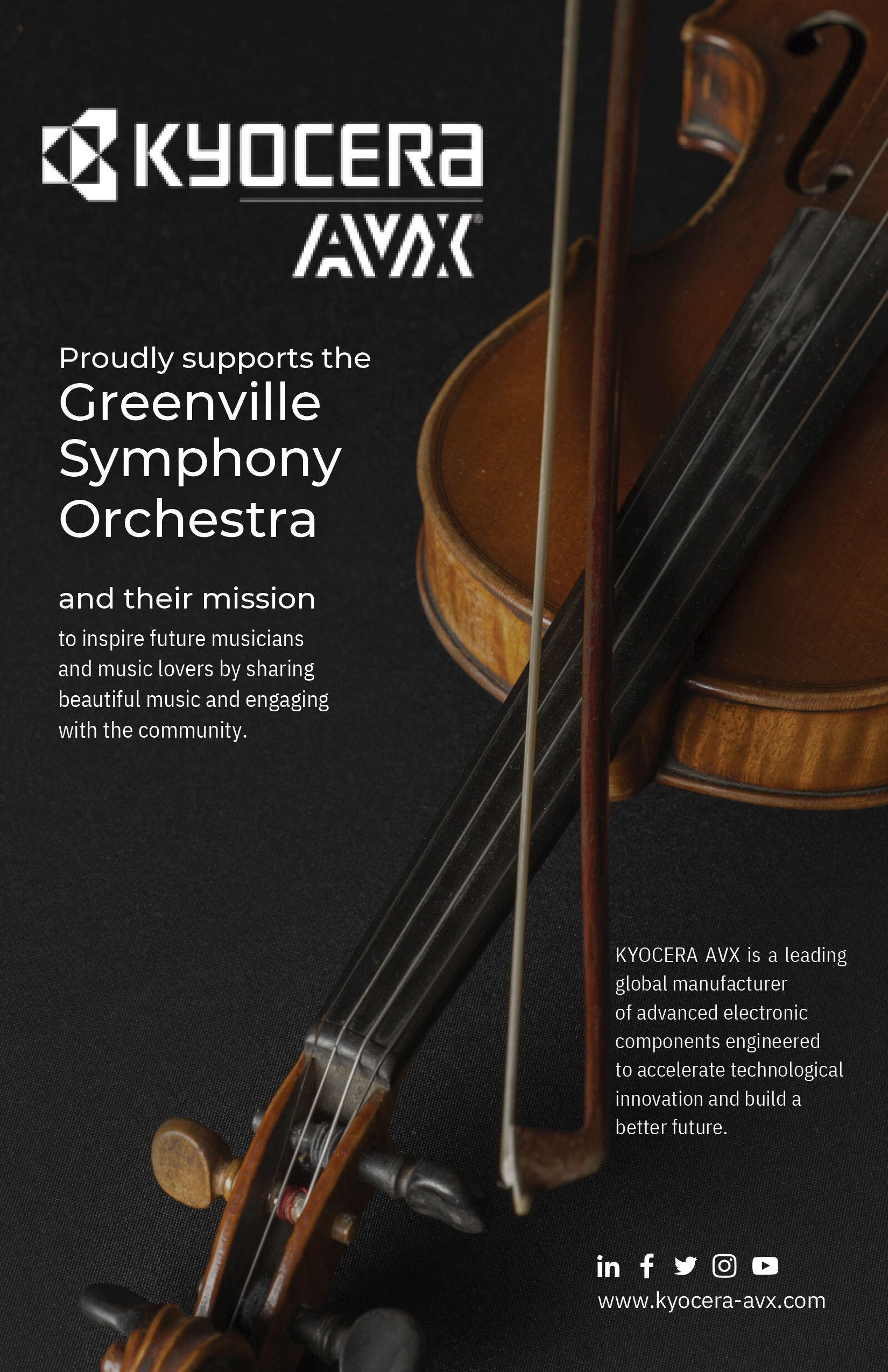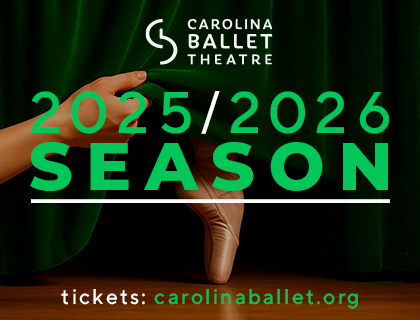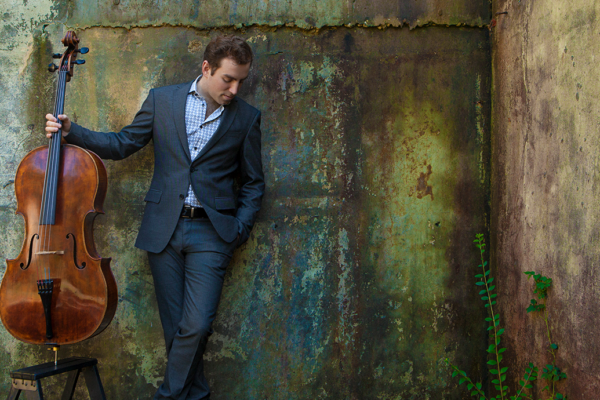

Lee Mills, Music Director
Thomas A. and Shirley W. Roe Podium Fund

Peace Concert Hall
Saturday, February 7 | 7:30 pm
Sunday, February 8 | 3:00 pm
SOLOIST
Tommy Mesa | Cello
SPECIAL GUESTS
Greenville County Youth Orchestra

| Charles Ives (1874-1954) Unanswered Question | 6’ | |
| Juan David Osorio (1985-) El Paraíso segun María | 12' | |
| Arturo Márquez (1950-) Danzón No.2 | 10’ | |
| INTERMISSION | ||
| Antonín Dvořák (1841-1904) Cello Concerto in B minor, Op.104, B.191 I. Allegro II. Adagio, ma non troppo III. Finale: Allegro moderato — Andante — Allegro vivo | 40' | |
Dr. Mesa's appearance is sponsored by the Revs. Stephen Bolle and Peggy Muncie in memory of the Rev. Victor E. H. Bolle, cellist.
Dvořák’s Cello Concerto
Program Notes by Paul Hyde
The Unanswered Question
Charles Ives (1874-1954)
Charles Ives’ The Unanswered Question (1908) is a groundbreaking work that exemplifies the American composer’s experimental spirit and philosophical depth. Scored for three distinct instrumental groups — strings, solo trumpet, and woodwind quartet — the short piece unfolds as a “cosmic drama” in musical dialogue.
The strings, playing slow, quiet chords, usually offstage, represent, as Ives said, “The Silence of the Druids — who Know, See and Hear Nothing.” Their static, hymn-like texture sets a meditative backdrop.
Against this, the muted trumpet poses “The Perennial Question of Existence” seven times, each iteration haunting and unresolved. The woodwinds, dubbed the “Fighting Answerers,” respond to the trumpet’s question with increasing complexity and dissonance, ultimately giving up in frustration.
Ives’ use of spatial separation and independent tempos for each group was revolutionary, anticipating later experimental techniques. The trumpet’s final unanswered question, met only by silence, underscores Ives’ philosophical assertion: that some questions — especially the most fundamental existential ones — may be unanswerable or better left unanswered.
Performed decades after its composition, The Unanswered Question remains a powerful meditation on the limits of human understanding. Its timeless structure and emotional resonance continue to influence composers and captivate audiences, affirming Ives’ legacy as a visionary of American modernism.
El Paraiso Según María
Juan David Osorio (born 1985)
A composer and conductor from Colombia, Juan David Osorio has been commissioned by orchestras throughout the world. His piece, El Paraíso Según Maria (The Paradise According to Mary), received its world premiere in 2020 by the Seattle Symphony.
The 12-minute piece explores Latin American musical identity through a modern lens. It blends academic structure with expressive textures, evoking spiritual and emotional depth.
The work features two distinct sections. The first is based on a funeral chant called “Alabaos,” traditionally sung by women, often without instruments, to accompany a deceased person's soul on its journey to the afterlife. The cellos introduce the first theme, a mournful melody. True to tradition, the piece asks some musicians to sing in addition to playing their instruments. Hymn-like at first, the music becomes increasingly passionate before subsiding.
The second section features two courtship dances. The music here, challenging for any orchestra, is highly syncopated and bursting with energy.
Danzón No. 2
Arturo Márquez (born 1950)
Mexican composer Arturo Márquez’s Danzón No. 2, written in 1994, is a vibrant orchestral piece inspired by the Cuban danzón popular in Veracruz, Mexico. Commissioned by the National Autonomous University of Mexico, it blends classical structure with Latin rhythms, evoking sensuality and nostalgia.
The work features dynamic solos and shifting tempos, capturing the elegance of ballroom dance. A solo clarinet introduces the suave first melody, which is soon taken up by the strings. An exuberant second section features an energetic and highly syncopated rhythm. The earlier music from the beginning of the piece returns, followed by a blazing conclusion.
The popularity of the piece soared after conductor Gustavo Dudamel and the Simón Bolívar Youth Orchestra performed it internationally, earning it the nickname “Mexico’s second national anthem.” Márquez’s composition celebrates cultural identity and joyful emotional depth, making it a beloved staple in contemporary Mexican classical music.
Cello Concerto in B minor
Antonin Dvořák (1841-1904)
Antonín Dvořák’s Cello Concerto stands as one of the most revered works in the cello repertoire. Composed between November 1894 and February 1895 during Dvořák’s tenure in New York as director of the National Conservatory of Music, the concerto was inspired by several deeply personal and artistic influences. Among them were his homesickness for Bohemia, the recent premiere of Victor Herbert’s Cello Concerto No. 2 — which Dvořák attended — and the news of his sister-in-law Josefina Kaunitzová’s grave illness.
Initially skeptical of the cello’s suitability as a solo instrument, Dvořák had long resisted composing a concerto for it. He believed the cello’s high register sounded nasal and its low register too muffled for solo work. Yet Herbert’s concerto, particularly its lyrical middle movement in B minor, convinced him otherwise. Dvořák’s own concerto, also in B minor, would go on to defy his earlier reservations, showcasing the cello’s expressive depth and technical brilliance.
The concerto is structured in three movements: an expansive Allegro, a tender Adagio, and a dynamic finale. Characteristically, Dvořák’s music is both memorably tuneful and driven by fiery rhythms. The orchestration is lush and full-bodied, yet Dvořák masterfully balances the forces so the cello can soar above the ensemble. Throughout the piece, Dvořák thoroughly challenges a cello virtuoso’s technique.
The heartfelt second movement is especially poignant, believed to be a tribute to Josefina, incorporating a theme from one of her favorite songs.
The finale, energetic and triumphant, ends with a reflective coda that echoes the emotional weight of the preceding movements.
The concerto premiered in London in 1896, performed by Leo Stern, and has since become a cornerstone of the cello repertoire.
Ultimately, Dvořák’s Cello Concerto transcends its technical demands to offer a profound musical narrative — one of longing, love, and lyrical beauty. It remains a testament to the cello’s power as a solo voice and to Dvořák’s genius as a composer.
Paul Hyde, a longtime arts journalist, is an English instructor at Tri-County Technical College. He writes regularly for the Greenville Journal, the S.C. Daily Gazette, EarRelevant, ArtsATL, and the Atlanta Journal-Constitution. Readers may write to him at paulhydeus@yahoo.com.
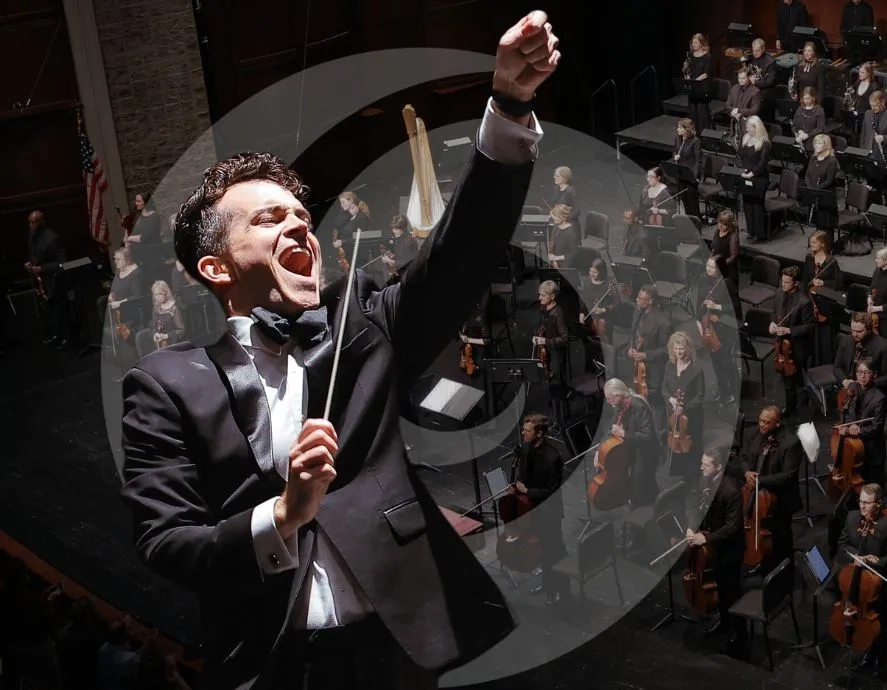
Concert Hall Series
Saturday performances at 7:30
Sunday at 3:00 pm
Opening Night: Hollywood Retrospective
October 4 & 5
An American in Paris
November 22 & 23
Dvořák’s Cello Concerto
February 7 & 8
Grand Canyon Suite + Rachmaninoff 2
March 14 & 15
West Side Story Symphonic Dances
+ Fanfare for the Common Man
April 11 & 12
Season Finale: Porgy and Bess
May 16 & 17
Gunter Theatre Series
Peter and the Wolf
November 1 at 3:00 pm
November 2 at 3:00 pm
Dvořák’s American String Quartet
February 14 at 7:30 pm
February 15 at 3:00 pm
The Last Five Years:
American Music Now
March 28 at 7:30 pm
March 29 at 3:00 pm
Dicey Langston:
The South Carolina Girl Who Defied an Army
April 25 at 3:00 pm
April 26 at 3:00 pm
Special Concerts
Holiday at Peace
December 12 at 7:00 pm
December 13 at 7:00 pm
December 14 at 2:00 pm
Peace Center
Harry Potter and the Goblet of Fire™ in Concert
January 10 at 1:00 pm and 7:00 pm
January 11 at 2:00
Peace Center
Chamber Music Series
American Echoes: from Apollo to Bluegrass
September 23 at 5:30 pm, Warehouse Theatre
September 24 at 7:00 pm, Hotel Hartness
Rhythms of the Night: A Tango Affair
February 24 at 5:30 pm, Centre Stage
February 25 at 7:00 pm, Hotel Hartness
Details and tickets available at greenvillesymphony.org
